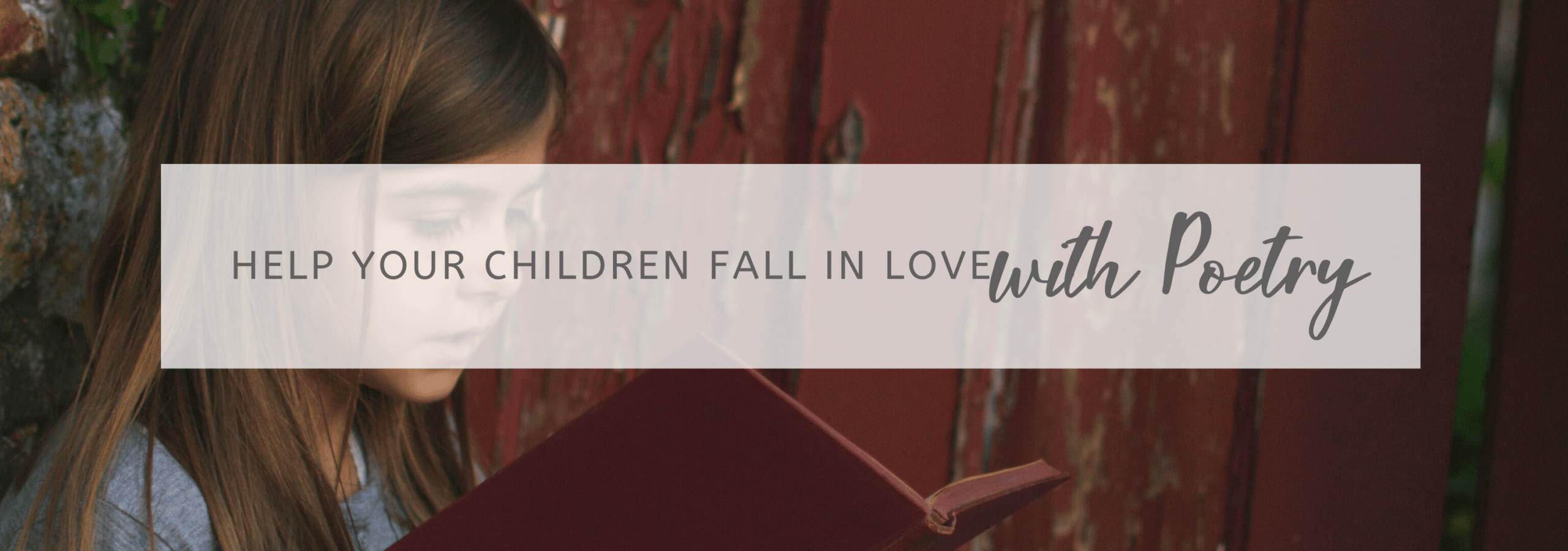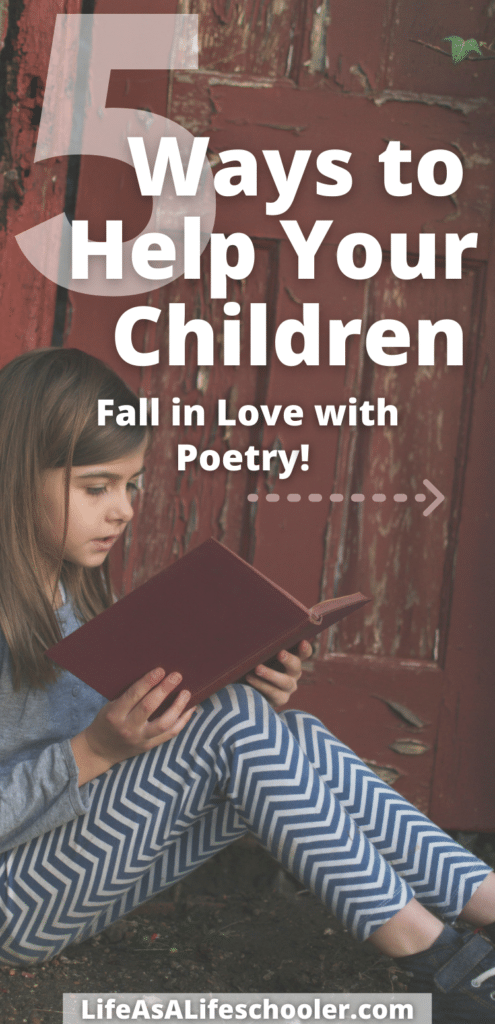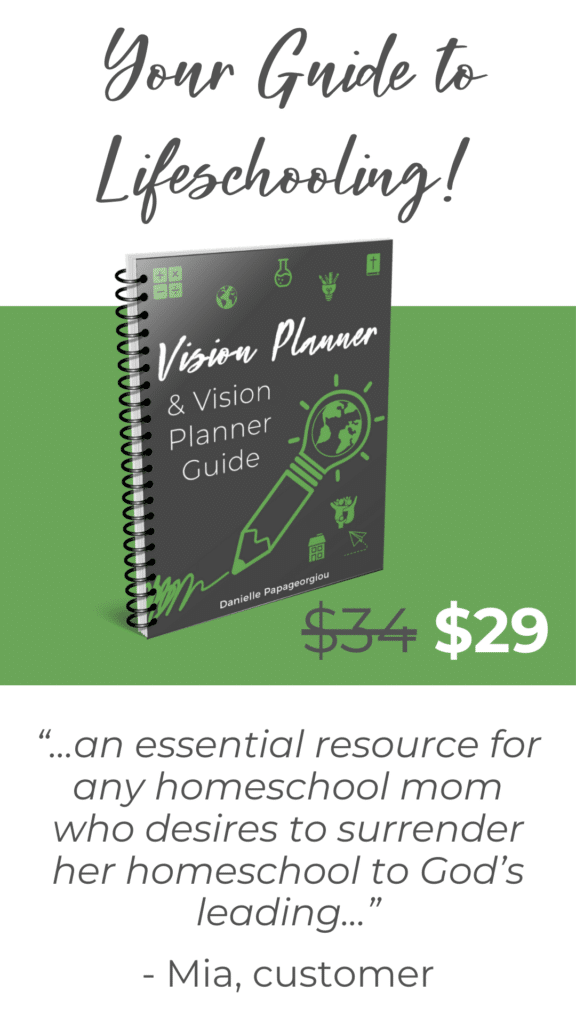If you’re looking for ideas to help your children fall in love with poetry without killing their love of learning, keep reading this guest post by Angela from Schooling with Grace.
One of my favorite early school memories is of our class memorizing one of Shel Silverstein’s poems. We laughed hysterically, as all first graders do, at the antics of the characters in the poems. The poems were silly and relatable to our little six-year-old selves.
It was just the beginning of my love of poetry that continued on in my teen years. I wrestled with more complex poems like Edgar Allen Poe’s Raven and The Road Not Taken by Robert Frost. If you are looking for a way to help your children fall in love with poetry, these 5 tips will get you on your way.
5 Ways to Help Your Children Fall in Love with Poetry
1. Choose Age-Appropriate poems and authors.
While you may be itching to introduce your children to the likes of Henry Thoreau or Langston Hughes, it’s important to remember that some of the subject matter written about by these classic poets may not be appropriate for young children. The language and imagery might be difficult to read and understand and more frustrating than fun.
Start by introducing your younger children to poets like Jack Prelutsky, E.E Cummings and Shel Silverstein. Their fun and quirky style will get students laughing and the rhyming pattern that most children’s author’s use will allow for easy reading and memorization.
If your students are older, start them off with poets like Robert Frost and Emily Browning, who might be more familiar poets, before moving them on to older classics.
2. Start with shorter poems and poems in modern English.
Nothing will frustrate your children more than you telling them that they are going to read a poem and then introducing them to Homer’s Illiad.
If this is your children’s first experience with poetry, help them be successful by having poems that they can read easily and make connections with. You don’t want them stumbling over thee’s and thou’s and wondering what “lover” means in any particular poem.
Lewis Carroll who is well known for his novel Alice’s Adventures in Wonderland was also a poet. He wrote quite a few fun and quirky poems like the one below, that have had children smiling for decades:
The Crocodile
Lewis Carroll
How doth the little crocodile
Improve his shining tail,
And pour the waters of the Nile
On every golden scale!
How cheerfully he seems to grin,
How neatly spreads his claws,
And welcomes little fishes in,
With gently smiling jaws!
2. Point out the imagery and language that the author uses.
Like every author, poets are very particular with their word choice. Poems are meant to invoke feelings, convey a thought or describe a scene. Invite students to try and understand what the author is trying to convey with the use of their words.
3. Introduce different types of poems
Not all poems fit the same kind of pattern. Poems can be structured, with rhyming lines and meter, or they can also be freeform, which follows no formal structure. Some of the more popular types of poetry are; Rhyming, Haiku, Sonnet, Llimerick and Cinquain to name just a few.
Have some fun learning the characteristics of them and have your students practice creating their own.
4. Use poetry to teach other subjects
No need to sketch out extra time to teach poetry. Make it part of your school lessons, here are just a few examples:
- Vocabulary: many older poems use words that we no longer use in our everyday life, but many of those words will show up on the SAT.
- Grammar: Poems are the perfect place to get in a grammar lesson. Look for nouns, adjectives, adverbs, use of pronouns- point out homophones, authors use of punctuation, etc.
- History: Many poems have historical references. Introduce your students to poems like “Paul Revere’s Ride” by Henry Wadsworth Longfellow or “Oh Captain! My Captain!” by Walt Whitman. Poems like these give added insight into the time period and help readers to imagine the setting.
Final Thoughts
If your students are new to poetry, just have fun! Help them to see the beauty in the way the author uses their words and the rhythm in which they do it. When you are excited your children will be too and that is how they will fall in love with poetry.
Angela is the blessed wife and mom to 4 beautiful children that have both challenged and gotten on her last nerve over the past 13 years of homeschooling, but she wouldn’t change it for the world. She approaches homeschooling with humor and dedication. You can find her at Schooling With Grace or online on Facebook or Instagram
- The Book Writing Process: 5 Essential Tips (Plus a few more) - June 26, 2025
- Inspirational Missionary Stories for your Homeschool - March 5, 2025
- Tips for Building Healthy Relationships - February 17, 2025





